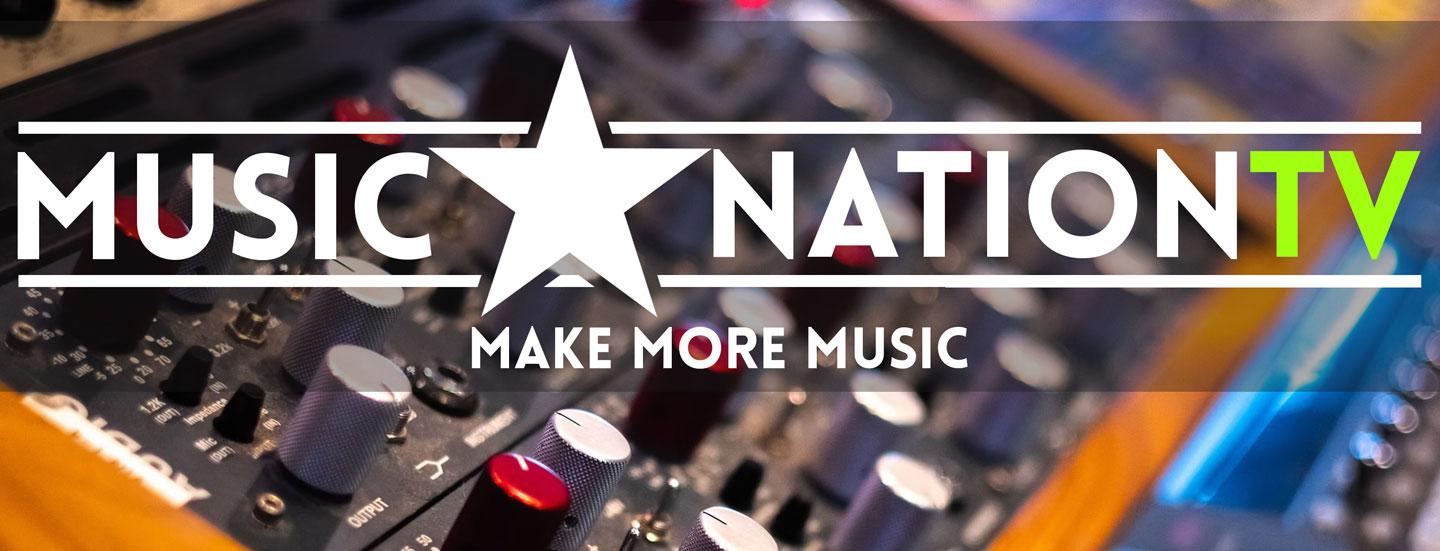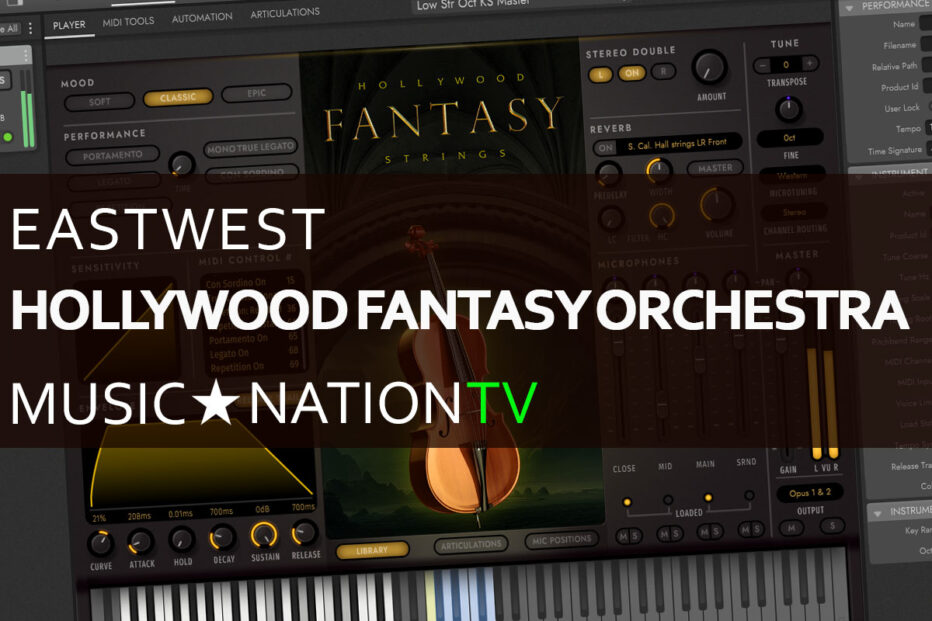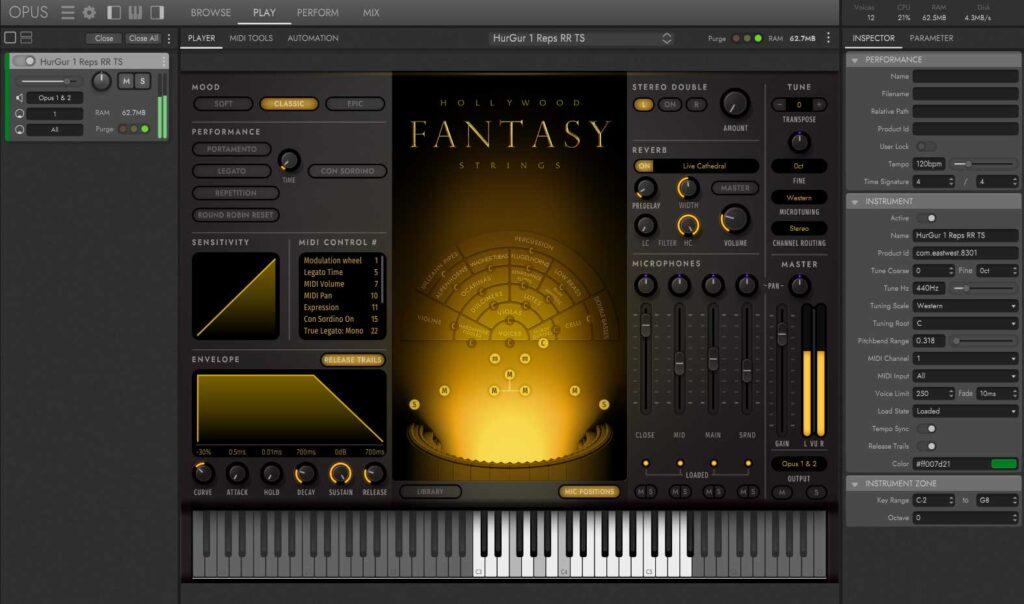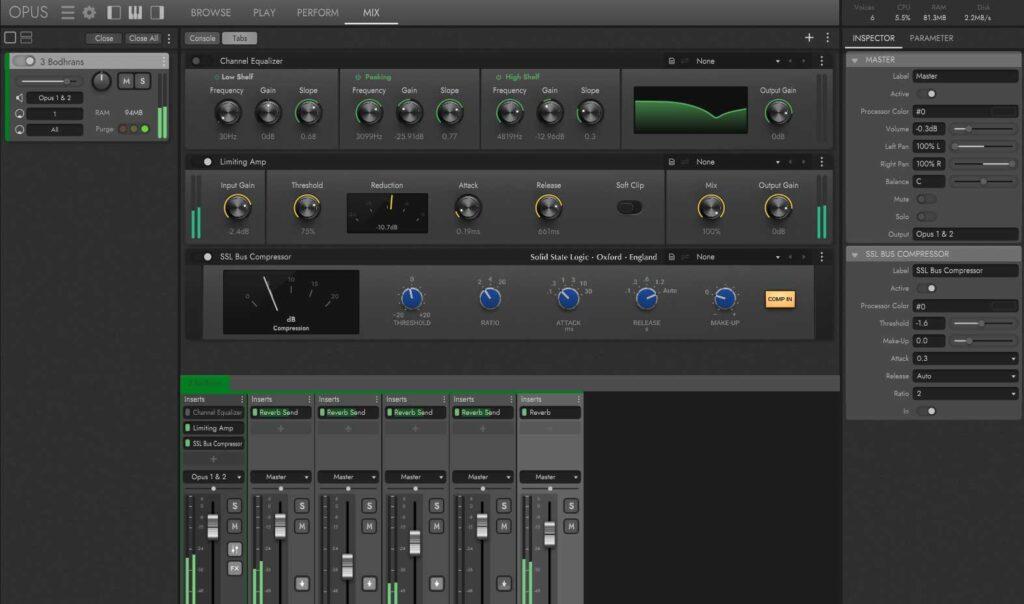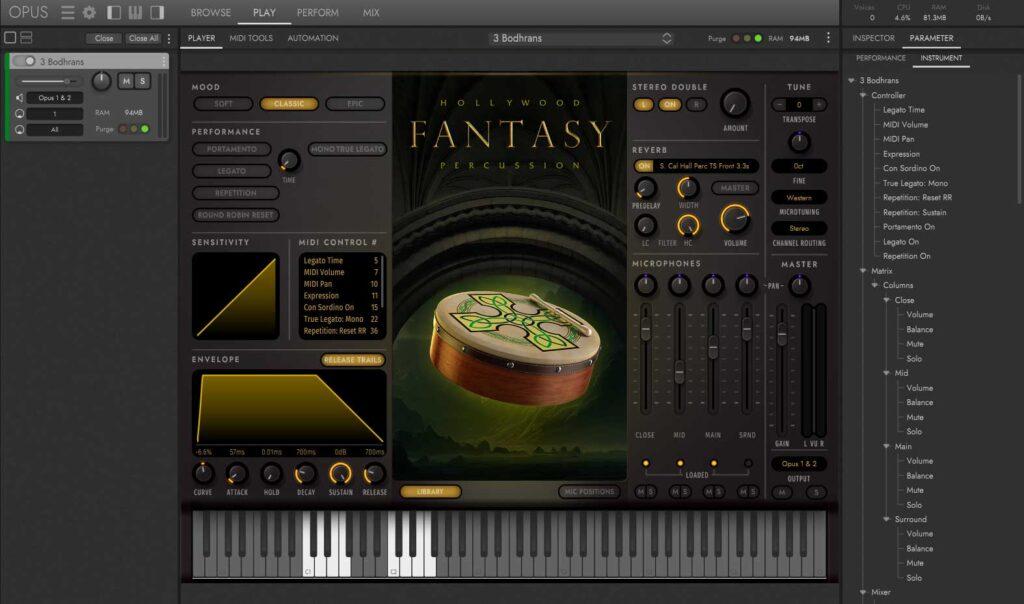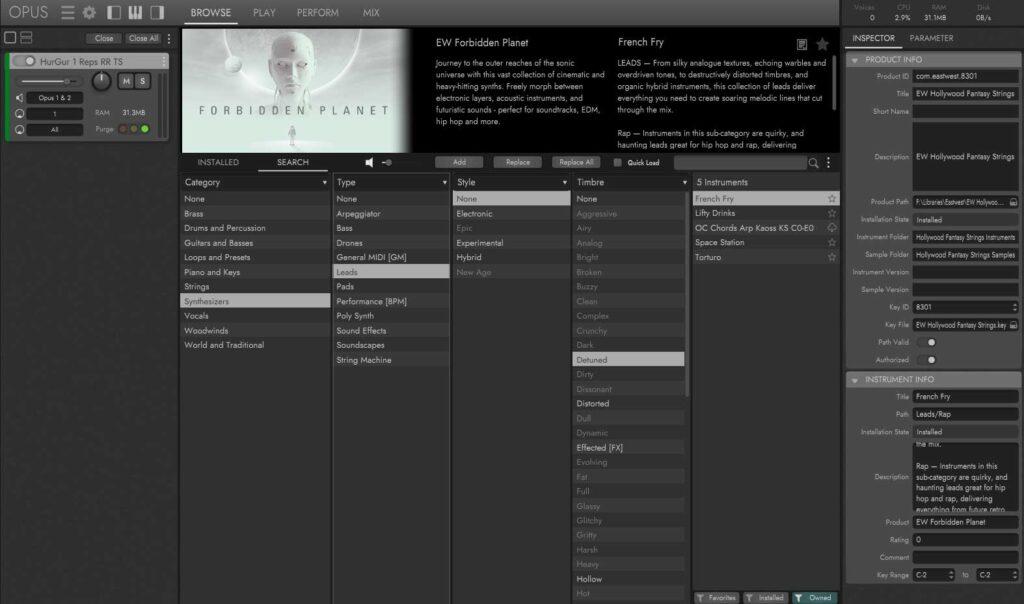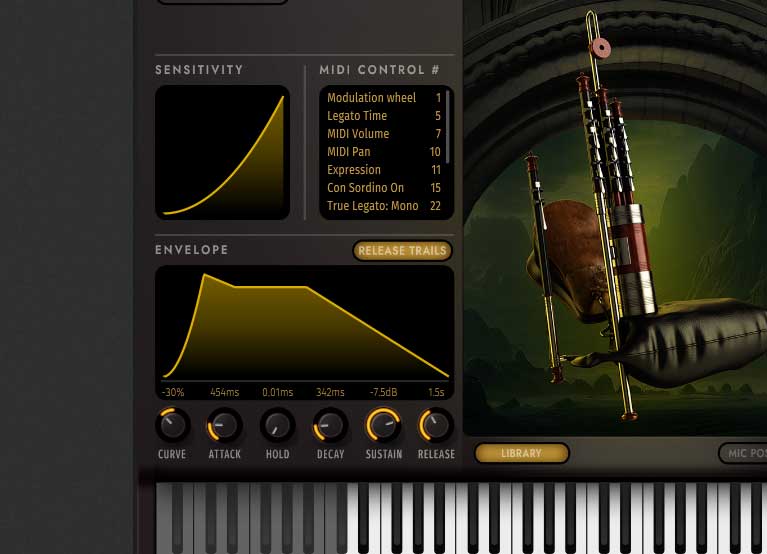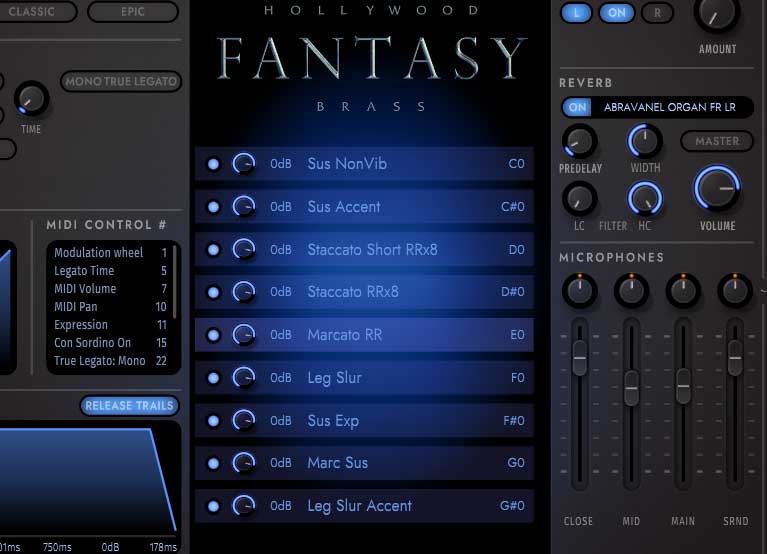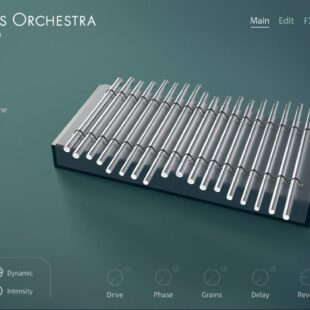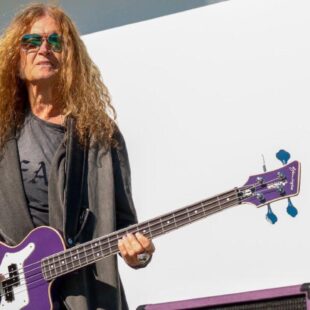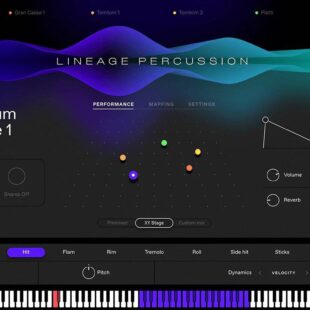EastWest Hollywood Fantasy Orchestra – Epic Soundscapes
Welcome to Music Nation TV. Created by the software team at EastWest, the Hollywood Fantasy Orchestra series looks to set new standards for realism, versatility, and expressiveness in the world of big-screen virtual orchestration. Finally, the full 5-part series is available and we can look at the orchestra as a complete product, this should be interesting.
In the genre typically populated by very traditional instruments like the lute, hurdy-gurdy and whistle the like, this was no doubt a challenging feat for EastWest to present a complete orchestral ensemble as a modern cinematic standard. And though the theme is very focused, Hollywood Fantasy Orchestra looks to offer an eclectic selection of instruments to bridge any genre.
We have had some months to play with the individual Strings, Brass, Winds and Percussion editions, and now, with the release of Fantasy Voices, it’s an opportune moment to assess the orchestra in its entirety.
Getting started
EastWest’s Hollywood Fantasy Orchestra is a virtual instrument library that has garnered significant attention in the world of music production and composition. Known for their high-quality virtual instruments, this orchestral library promises to deliver a symphonic experience like no other.
Hollywood Fantasy Orchestra is an ensemble library released as five individual products, with the sixth, Orchestrator, expected to be released before the end of the year. It is not primarily intended to function as a standalone medieval-themed orchestra in its own right, but rather as a stylized addition to your modern orchestral library. Its purpose is to augment and enrich the soundstage with an array of period instruments.
When making a purchase, you have two options: you can either choose to buy the base Fantasy Orchestra outright or opt for the full Orchestrator version (currently, only a pre-purchase option). Alternatively, you can choose to purchase each of the five individual sections.
However, the best value by far is EastWest’s excellent subscription service called ‘Composer Cloud.’ This monthly service provides full access to this library and all other titles in the EastWest catalogue, in particular the flagship Hollywood Orchestra, with which this fantasy collection integrates seamlessly.
The core EastWest Installation Centre app allows for easy searching and downloading of complete libraries or individual instruments from the collections at your convenience. This is a fantastic option when you only need one instrument and not the entire library. You can then proceed to remove any library or instrument you don’t need to save space. It’s a great system.
The new Opus Engine
The library series requires the EastWest Opus player which can be loaded either as a standalone application or as a VSTi within your DAW. Similar to Native Instruments Kontakt, in that it is capable of loading multiple layers of articulations, effects and MIDI functionality. However, Opus offers a more extensive range of visual feedback, including mic positions, articulation maps, and MIDI control sensitivity, enhancing your overall experience.
Since Opus is a proprietary platform, it benefits from having full access to the entire EastWest catalogue of sounds, and as mentioned earlier allowing you to preview and directly import instruments from any of the online archives (a Composer Cloud subscription is required). This means there is no need to download extensive sample libraries, instead, you can choose individual instruments as needed and easily remove them when they are no longer necessary.
The new Opus platform represents a significant improvement over the original EastWest Play engine, streamlining many of its cumbersome workflows and enhancing performance. Nice little touches, like automatically purging samples, customisable keymaps for articulations, and the ability to create custom routing, mixing, and effect processing, make Opus a genuinely versatile and user-friendly environment.
The structure and workflow of Opus require some getting used to due to its legacy naming system and the necessity to handle a wide variety of instrument libraries. The same interface must cater to instruments as simple as drums and guitars, as well as massive sections like an 18-piece violin or choir ensemble, so some effort must be invested into understanding the sometimes confusing nomenclature that stretches over probable thousands of instruments and articulations available.
The browser functionality is now robust and well-organized, featuring favouriting and search functions. However, there is room for improvement in the core library naming. For instance, there’s a somewhat confusing naming convention for Hollywood Orchestral instruments that now overlaps with Hollywood Fantasy instruments. Some banks are labelled as ‘Orchestral,’ while others are categorized simply as Brass or Harp.
Additionally, unlike Kontakt, Opus lacks the ability to arrange, filter, or rename libraries, which can make the process of navigating through the library list somewhat laborious. Implementing an image/icon system similar to Kontakt and UVI’s Falcon would greatly enhance usability in this regard.
But on the whole, the experience of using the new Opus engine is vastly improved, eliminating the previous obstacles that the old Play engine sometimes posed to achieving professional and world-class results with EastWest products.
Unboxing the beast
Fantasy Orchestra is a re-imagining of the EastWest Hollywood Orchestra library, presented in a very cutdown and easy-to-manage package. Most of the more traditional “modern” orchestral instruments have been swapped out for medieval-themed comparisons, but presented in a way that still allows Fantasy Orchestra to sit well with a more contemporary full orchestral library.
Fantasy Orchestra is divided into five smaller sections: strings, brass, woodwinds, percussion, and voice, mostly offered in ensemble groups, with each section typically containing three or more instruments, resulting in a larger-than-life sound.
A comprehensive list of included instruments can be found on the EastWest website. However, some of the standout instruments, such as the Viola Da Gamba in the Fantasy Strings library, are truly remarkable. This viola is a low-register instrument that is played between the legs like a cello. It possesses a rich and deep texture reminiscent of the cello but has an extended upper range that offers a fuller and more soulful sound, often associated with baroque music. The included key switch patch for this instrument contains all the articulations mapped across your keyboard is a genuine pleasure to play and responds exceptionally well to live changes in articulation.
Equally interesting within the string section are the three Hardanger Fiddles, which provide another distinctive sound that contributes to the fantasy atmosphere. These instruments offer a unique and recognizable sound that adds to the overall fantasy musical experience.
Fantasy Winds features the very on-trend Uillean Pipes, but what truly captivated me were the Ocarinas, which offer a delightful and distinct tone with their haunting whistle-like sound.
The percussion section predominantly showcases uniquely stylized instruments, further reinforcing the cohesive cinematic theme. While classic medieval bodhrans are certainly impressive, it’s the intriguing Goatnail shakers, nagara, and unusual metallurgy collection that piqued my interest.
While the new voices section maintains a fairly traditional tone, the words and phrases are remarkably well-executed, offering a diverse selection of mystical-sounding dialects. Unfortunately, there is no custom word builder included, but with your Composer Cloud subscription, you can likely create translations for any Elven, Orkish, or Goblin words you have in mind using the Hollywood Choirs Word Builder 2 software.
The Sound
As expected, the sound quality of the Hollywood Fantasy Orchestra is impressive. The libraries were recorded in Eastwest’s iconic Studio 1 in Los Angeles, renowned for its outstanding acoustics and vintage equipment.
While the room ambience is smaller than your typical cinematic orchestral location, the recording process with high-end equipment and clearly very experienced and skilled engineers has resulted in a lush, three-dimensional soundstage that envelops the listener and adds a sense of grandeur to any composition. The instruments all sit beautifully in the mix, allowing for precise placement and an immersive experience.
The immediate sound out of the box is loud, wide and epic. This library is pulling no punches and means to hit you right in the face with its full-range sound.
Even typically subtle instruments like lutes and dulcimers take on an impactful presence. The close recordings of these instruments are highly detailed, to the extent that finger noises, string scrapes, and delicate plucking sounds are easily discernible. In the case of wind and brass instruments, the inclusion of air noise adds even more realism to the experience.
The room sound in EastWest’s studio is quite pleasant but not particularly expansive. If you’re accustomed to the cavernous acoustics of Spitfire Audio’s Air Studio recordings, these might seem relatively compact.
However, there is a notable advantage to this in that the included convolution reverb is simply exquisite and has a significant impact on the sound. It appears to be a scaled-down version of EastWest Spaces 2, although there is no mention of this in the documentation.
While there are limited controls for modifying the effect, the sheer quantity of high-quality presets available provides you with an almost limitless array of choices. So on the one hand you don’t have the natural ambience of a massive studio, but you do have much more control and flexibility with the tailored reverb.
I believe this may also offer additional advantages for post-mixing and Foley work, which will undoubtedly be necessary for movie and TV applications. The less ambient core sound will provide greater flexibility in applying post-processing and ambient effects, all while preserving a coherent overall mix.
Though you have four mic positions to play with, on the whole, I don’t find them particularly effective, in that the core ‘main’ setting by itself is excellent. You can opt for a custom mix of close, mid and surround mic, but due to the room’s size, there is not much dramatic difference.
I found when using external reverb, often the close mic option sounded best, but you will need to experiment with the option to see what works best for you.
Composing
For the most part, Fantasy Orchestra is a loud library clearly intended for big-screen cinematic projects. It faces challenges when it comes to subtlety, primarily because it lacks dynamic control options beyond expression. Additionally, the recordings consistently maintain a forte intensity, giving the impression that the instruments are constantly operating at their highest volume levels.
Throughout all five libraries in the series there is a distinct sound or feeling the instruments have been recorded more as a collection of soloists rather than divisi or part of a larger ensemble as with the Hollywood Orchestra library. Though most of the instruments are small groups of 2 or 3 players that fit well together as small chamber-type setups or full band in unison, they individually are capable of standing out more for individual solo parts when needed as long as realism is not important.
While the key instrument in each group sounds fantastic, the rest of the instruments often lack nuances and expressiveness that are essential for creating convincing and emotive solo performances. This is especially apparent when attempting to achieve delicate phrasing, expressive vibratos, or subtle dynamic changes.
Much of this is due to the nature of such archaic instruments on offer, the very flat dynamics take some getting used to, especially when compared to Hollywood Orchestra where every instrument tends to sing with expression. This is clearly a production decision to stay genuine to the period.
Furthermore, the ensemble approach in the recordings poses a challenge when layering multiple notes, leading to issues with note-stacking. Given that a single note comprises as many as nine individual instrument recordings, playing a triad or a 5-note chord can result in up to 80 instances of the same instrument being layered.
Again, if realism is not a top priority, this may not be a concern, but it’s important to exercise restraint to avoid generating overwhelming walls of sound.
The Opus platform also offers some global tools that perhaps work well with other instruments but should be very much avoided for orchestral. The Stereo Double function sounds terribly fake, as do the forced portamento, legato and con sordino functions.
The envelope tools have some merit, particularly in the attack speed and curve, plus the release dial, but on the whole these tools should be reserved for synth patches.
The primary standout feature is the new ‘Mood’ function, consisting of three buttons that alter the sound to be either soft, classic, or epic. I suspect these are distinct sample recordings, as selecting one reloads the sample pool and applies different effects. I found them rather intriguing; however, they are quite contrasting and a bit too pronounced for my personal preferences. If you’re seeking a completely different sound profile, these serve as good starting points. Still, I personally favour more subtle adjustments, such as fine-tuning mic levels and effects.
Articulations
I found the provided articulations for each instrument very good. While the number of choices may not be groundbreaking, the selected recordings work well to provide playable instruments within the ensemble confines.
Legato articulations are particularly well done, considering that these are predominantly ensemble instruments. Adhering to realistic playing techniques and avoiding the note-stacking issues mentioned earlier, I found that, overall, the legatos are the preferred option for scoring most arrangements.
Percussion instruments mostly include both high and low recordings, meaning duel zones on your keyboard allow for more expressive double-key playing.
As with all libraries, some research into the instrument’s construction and playing techniques can significantly enhance the realism of your performances when applied. In the case of Fantasy Orchestra, I found this to be nearly indispensable, as nearly all the instruments incorporate subtle tricks and techniques that are essential for bringing out their unique tones.
Conclusion
The Eastwest Hollywood Fantasy Orchestra is an exceptional instrument collection that delivers a breathtaking filmic experience when used in conjunction with more traditional orchestral libraries. With its exceptional sound quality, expansive range of articulations, and much more intuitive interface, it is a dream come true for composers and producers looking to create captivating and lifelike orchestral compositions.
While there is a distinct cinematic epicness for each of the libraries, the individual instruments have mostly limited dynamics and expression making this the wrong orchestra for more intimate and soft arrangements. Hollywood Fantasy Orchestra fits in perfectly for stronger more aggressive styles typically associated with the action/epic fantasy films and trailer music.
A significant amount of credit should be given to the Composer Cloud subscription and the Opus browser system, which essentially transforms your desktop into a massive high-end sound module. The constraints of hard drive space have been eliminated, and the affordable, more manageable monthly fee stands in stark contrast to the substantial upfront costs that would typically run into tens of thousands of dollars.
Eastwest Fantasy Orchestra is an ambitious collection expanding on the already successful footprint of the Hollywood Orchestral series. Whether you are working on film scores, video game soundtracks, or any other genre that demands the magic of a symphony orchestra, together the Eastwest Hollywood series is a must-have tool for composers and producers at any level of expertise.
For more details, demos and purchasing options, visit EastWest Sounds Online.

Like the review? Shout us a cup of coffee!
